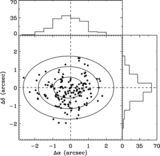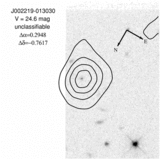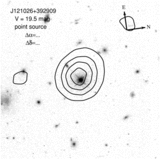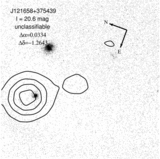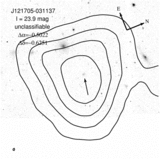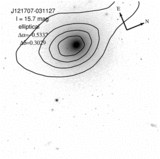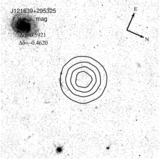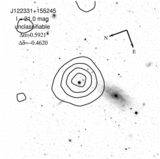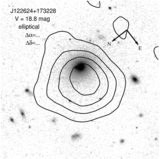Image Details
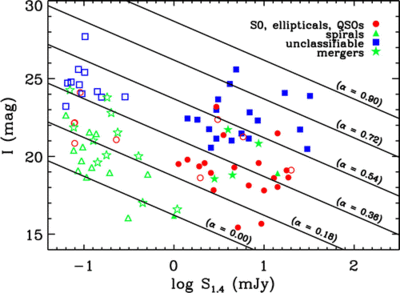
Caption: Fig. 8.
Integrated radio flux vs. total I‐band magnitude for the complete FIRST+WFPC2 sample. The V‐band flux has been converted to an effective I band as described in § 3.2. Objects are separated into early, late, merger, and unclassifiable types, while the filled and open symbols are from this work and Afonso et al. (2006), respectively. The lines are contours of constant radio‐to‐optical flux ratios as defined by eq. (8). In the millijansky flux range, the majority of the galaxies have early‐type morphologies and shallow spectral slopes of ﹩\alpha _{ro}\lesssim 0.4﹩. In addition, there is only one late‐type spiral and four mergers which span a large range of spectral indices (﹩0\lesssim \alpha _{ro}\lesssim 0.5﹩). However, lower radio fluxes (﹩S_{1.4}\ll 1﹩ mJy), there are very few early‐type systems where late‐type systems dominate the counts with the ﹩\alpha _{ro}\lesssim 0.4﹩. This dramatic change in optical morphologies at ﹩S_{1.4}\simeq 1﹩ mJy may be related to a change in the source of the radio emission, such as primarily starburst galaxies (﹩S_{1.4}\lesssim 1﹩ mJy) vs. primarily AGNs (﹩S_{1.4}\gtrsim 1﹩ mJy). In addition, the line of ﹩\alpha _{ro}\simeq 0.18﹩ marks a fiducial point, below which nearly all galaxies are late‐type.
Copyright and Terms & Conditions
© 2008. The American Astronomical Society. All rights reserved. Printed in U.S.A.


